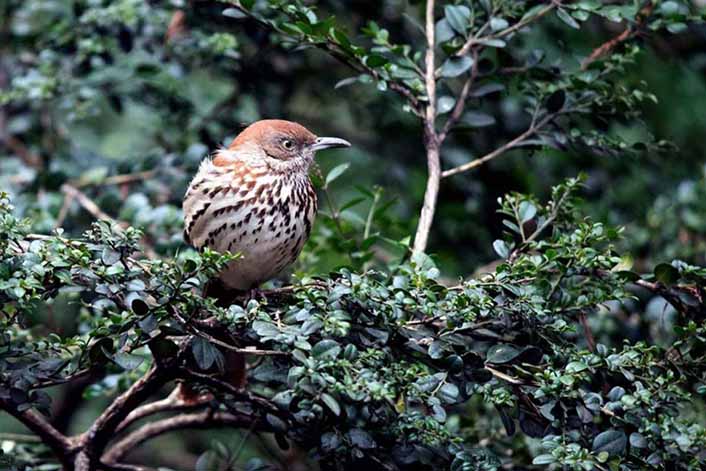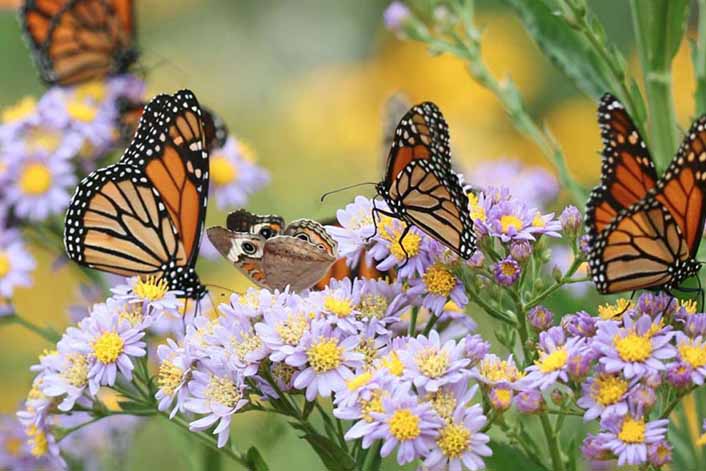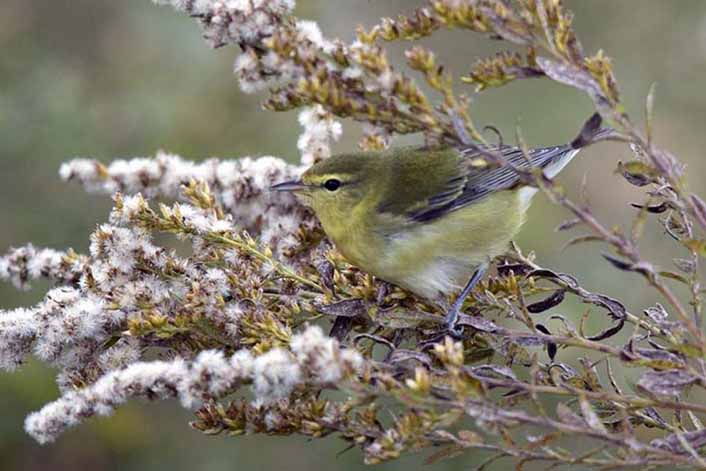About Our Field Trips
Field trips provide opportunities to observe and learn about birds, fauna, and flora with the help of knowledgeable leaders. Participants at all skill levels can enjoy our trips. Newbies and experienced birders alike are encouraged to attend, and with over one hundred excursions in our schedule, there is something for everyone!
The annual field trip schedule is published on our website in the early summer. The schedule begins in September and runs through the following August. We offer several types of experiences:
Central Park Tuesday Morning Spring & Fall Migration Walks
Our free migration walks are open to an unlimited number of members and non-members alike. Registration is necessary, as we assign several knowledgeable and enthusiastic experts to lead groups of birders that are small enough to remain friendly and manageable. The open registration period is from the Wednesday before the trip (at 9 a.m.) through the Sunday before the trip (at 6 p.m.). As with all of our trips, please refer to our field trip schedule for dates for these events.
Public Transportation And Carpool Trips
All trips other than spring and fall migration walks in Central Park have limited spots available, and registration is on a first-come, first-served basis, with member priority. Trips are typically free and limited to around twelve to fifteen people. After registering, the trip registrar will let you know if you have obtained a spot or are on the waitlist.
Around half of our trips are accessible by public transportation. The trip registrar will provide the directions to all confirmed on the trip. In the case of trips that can’t be reached by public transportation, the registrar will work with participants to organize ride-shares. Typically, this can be easily arranged, but we can’t always guarantee enough drivers with open seats. Please let your registrar know if you need a ride when you register. If you are a driver, we encourage you to participate and offer rides if possible. (A ride-share donation is recommended for riders to compensate drivers for their expenses.)
Long-Distance Excursions
We aim to offer a few long-distance and multi-night trips each season. These can include our new Adirondack spring and winter trips with Joan Collins (a renowned birder and guide in the Adirondack region of New York) and a long-distance excursion with a different destination each year, led by Rick Wright (an outstanding birder and guide located in northern New Jersey who works with Victor Emanuel Nature Tours). These trips have registration dates well in advance of the trip and, unlike our other trips, will cost money to attend.
The Linnaean Society of New York COVID-19 Field Trip Guidelines
Updated November 8, 2023
The Federal COVID-19 Public Health Emergency ended on May 11, 2023; we have revised COVID-19 guidelines accordingly. Unless a leader requires it, we no longer require participants to be vaccinated to attend trips. However, we request that field trip participants continue to take sensible precautions to prevent the spread of respiratory illnesses, including the following:
- Please stay home if you have a fever or any symptoms of respiratory illness or if you have tested positive for COVID-19 in the last five days.
- Please respect other participants’ choices to practice social distancing, wear a mask, or refrain from sharing binoculars, scopes, food, and drink.
- When sharing a car, please discuss the masking protocol with all other riders in the vehicle before the trip.
- Individual trip leaders may require participants to adhere to additional COVID-19 precautions, such as mask-wearing or requiring participants to be vaccinated. These requirements will appear in the trip’s online description.
- We reserve the right to amend these protocols should the safety guidance warrant it.
How to Participate
Registration Process
Each trip has a date when registration begins. Use the link to the trip’s registration form on or after that date.
Registration for most field trips takes place on Monday mornings at 9 a.m. ET, about two weeks before the excursion. However, this is not true for all field trips, so carefully check the posted registration date.
Except in the case of Tuesday morning walks in Central Park, numbers are limited, so you will need to wait to hear back from the trip registrar to learn if you have secured a spot on the trip.
Regardless of the type of trip, you will receive a follow-up email with more information, including start time and location. Only in the case of Central Park migration trips is the information automated. Please wait for the trip registrar to contact you for additional information for all other trips.
Pro Tip: Popular trips tend to fill up within a few minutes or in the first few hours. We suggest you mark your calendar with the registration date and time for all trips you are interested in so you can register as soon as registration opens.
Limited Number of Trip Participants
Except in the case of the Central Park Tuesday morning spring and fall migration walks, the number of field trip participants is typically limited to twelve to fifteen people. Birding is a quiet activity, and this critical rule is in place to ensure an excellent individual experience while respecting and protecting wildlife and our natural environments.
Pro Tip: Become a member of the Linnaean Society to gain access to more field trips and enjoy all our other member benefits, including monthly speakers, events, conservation, other volunteer opportunities, and social events.
Trip Registrar
Each trip has a trip registrar who coordinates the trip and ensures that everyone has a good experience. They can answer your questions, help you find a carpool ride, and even deal with unexpected weather events.
The trip registrar will send an instructional email a few days before the trip to provide information, including the exact starting time and place, small changes to the itinerary, and what to bring. Always check this website for information about any schedule changes before a field trip or event.
After the trip is complete, the trip registrar will write a trip report that includes a bird list and photos from the day; it will be published on the website.
Pro Tip: If you are a photographer, send your photos to the trip registrar, who may feature them on our website and on our social media. The photo guidelines must be adhered to for selection consideration.
Transportation
Many of our trips are accessible via public transportation, but some require a car to reach diverse seasonal hotspots in the tri-state area. Drivers and car owners are encouraged to participate!
Typically, there are no costs associated with our trips. However, if you are riding in a carpool, we ask that you compensate the driver. The trip registrar will communicate the suggested donation to the driver. If a group rents a car, they are responsible for arranging the rental and splitting the cost.
Pro Tip: If you are new to the Linnaean Society or don’t know anyone offering a ride, your trip registrar can usually help find a seat in a carpool for out-of-town trips.
Trip End Time
Please note that the exact end time for trips cannot be given in advance due to factors such as the amount of bird activity, the pace of the group, changes in the leader’s plans based on up-to-the-minute information, or traffic conditions.
Canceling Or Leaving Early
Please be courteous and immediately notify the registrar if you need to cancel. Similarly, please inform the registrar if you need to leave a trip at a specific time. However, accommodating such a request may not be possible.
Pro Tip: Many of our trips are oversubscribed, and there is usually a waitlist of people who would love to take your spot. Let the trip registrar know as soon as possible so another person can take your spot on the trip.
What To Expect On The Trip
Best Practices for Group Birding
Trip participants work as a team and are encouraged to help each other by sharing knowledge and observations in the field. First and foremost, we respect all the environments we visit and support the protection of all wildlife. Also, birding alone or with a friend differs from birding on an organized field trip. With that in mind, please read our best practices for group birding guidelines.
What To Bring
The most essential items for birding are binoculars and a curiosity to observe and learn. Many people use field guides or phone apps such as eBird, Merlin Bird ID, or iNaturalist to verify and record their observations.
Pro Tip: Plenty of water and food is always recommended. Often, the leader will plan time for a group picnic along the way.
What To Wear
Dress comfortably and be prepared for walking and spending extended periods outside. Dress appropriately for the expected weather, which might require rain gear, warm clothing for cold weather, or a hat, sunscreen, and insect repellent for warm weather. Boots might sometimes be necessary for muddy, swampy locations or wetland trips.
Pro Tip: Avoid wearing white or bright colors that will distract and possibly scare the birds away.
Trips Requiring Scopes
Some trips, such as those to the ocean, are greatly enhanced using a scope. Leaders and members often share, but please check with the registrar for advice on participating in a scope trip if you don’t have one.
Documenting The Trip
Trip Reports
Trip reports are lists of the species observed on each trip. In order for a species to be listed, it must be seen by at least two of the trip participants during the trip. The trip registrar is charged with ensuring a list is created, and the trip leader will verify the accuracy of the list. If the list is submitted on eBird, it is ideal that only one list is created and shared will all participants.
Trip Photography
Many of our members are enthusiastic photographers, and we encourage photos to be taken on our field trips. If you wish to submit photos to be included on a trip report, please read these important photography specifications outlined below.
Photography Specifications
Participants are encouraged to contribute photographs to illustrate the field trip reports and social media accounts.
Photo Rights & Usage
When you submit your photos, you grant LSNY non-exclusive rights to publish the photographs online on our website, in print, and on social media accounts in perpetuity.
Photographer Credit
- Please do not add any watermarks or text to your images
- We always credit the photographer on our website and social media
- If you are concerned about marking the ownership of your photos, please set the IPTC Core metadata values. You can use any of the ITC fields, but please set these four as follows:
- Description – Set to the caption
- Title – Set to the accessibility description, usually just the species name
- Copyright Notice – Set to the year and the photographer’s name
- Copyright Status – Set to copyright
Photo Specifications
Prepare your photos using the following specifications. However, if you can’t figure this out, speak with the Trip Registrar, who will coordinate with the webmaster to resize/crop them for you.
Cropping
- 1200 pixels wide by 800 pixels high. (Use this cropping guide)
- JPEG format
Compression
If JPEG compression and color space are foreign concepts, we will take care of them for you. If you like to implement your own standards, we recommend the following:
- Be aggressive with the JPEG compression
- Use sRGB colorspace,
- Do not embed the color profile when saving the images.
Naming The Photo
Please name your photographs using the following format:
Species Name Optional Description © Year (YYYY) Photographer’s Name.jpg
For example:
- Peregrine Falcon © 2021 Jane Smith.jpg
- Peregrine Falcon attacking a Ring-billed Gull © 2021 Jane Smith.jpg
- Birders on the Watch Hill Ferry © 2021 Jane Smith.jpg
If you have multiple photographs of the same species, add a number after the species:
- Peregrine Falcon 1 © 2021 Jane Smith.jpg
- Peregrine Falcon 2 © 2021 Jane Smith.jpg
Submitting The Photo
- Email photos to the trip registrar within 72 hours.
- Put the trip name in the subject of your email.
- Limit your submissions to at most five images per trip.
- Select your best shots, and remember they might be used to illustrate a trip report or on social media. A first-of-season bird, or a rarity, should take precedence over a picture of an American Robin.
Attaching The Photo To An Email
Macintosh users should be careful not to let the Apple Mail program reduce the size of their images when emailed as attachments. Ensure “Image Size” is set to “Actual Size” in the address bar’s lower right-hand corner before sending.
It is easy to email properly cropped images, so please avoid using online file-sharing services like Dropbox, Google Drive, and One Drive. However, you may send them in a Zip file.




